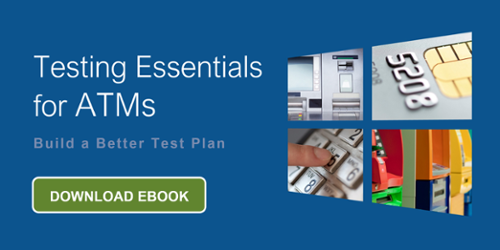An interesting piece was published on CNBC.com about the business of cash. And it seems the marketplace is still somewhat bullish on notes and coins. Even a few of the Fintech leaders quoted in the article acknowledge that there is a lot of opportunity in physical currency.
From a personal perspective, my use of cash has increased over the past few years (Can you say “data breach”?). Yes, I am in that age group that grew up with cash, but I am still most comfortable paying for day-to-day purchases using real dollars out of my wallet. (For the sake of completeness, I use a credit card for just about everything else and never use a debit card.)
For those of us who work closely with the ATM industry, this is some welcome good news. Taken in isolation, the recent earnings announcements by ATM industry leaders NCR and Diebold would seem to indicate that the ATM business is struggling. But since the preferred method for accessing cash is still the ATM, I will choose to look at the glass as half full.
Of course, there are challenges here. For instance, I think the ATM business will need to change and evolve faster than it has been to stay relevant and competitive for the long-term. Just as the industry moved from its proprietary roots (ATM 1.0) to a more open environment based on Windows and XFS (ATM 2.0), it is now time to transition to the next level, i.e. ATM 3.0.
Time for Real Change
The ATM Industry Association is aggressively promoting its Next Gen initiative to help drive the technology side of the business forward. Working with organizations from all across the industry and the world, ATMIA is driving this important discussion forward and helping to develop the framework, processes, procedures and standards to help the ATM industry continue to not only survive and thrive. But, as important as the ATMIA Next Gen initiative is, it is only a part of the ATM 3.0 transformation work that needs to be done.
Ancient History
Speaking with Paragon clients and prospective clients every day, it is with amazing regularity that I am transported back to the 1980’s by conversations with and about the very same component pieces and people I dealt with back then. I wonder when the ATM “channel” as an organizational construct actually gets integrated into the rest of the organization. Many years ago, we talked about the opportunity for organizations to bring all of the payments people together into a “Payments Center of Excellence,” but it seems that this never became a reality. Down in the engine room of most organizations, I still talk to the “ATM people” or the “Tandem people,” etc. And each of these groups seems to have maintained their own identity, their own tools, and their own lingua franca.
The move toward ISO 20022 as a common payment messaging standard may help tear down some of the artificial boundaries created as the different payment channels evolved separately over time. One can hope that this allows us to correct some of the mistakes that were made in the past. How many different variations of ISO 8583 should one organization have to support? The ATM industry still relies heavily on NDC and D912, both of which seem to have been around forever.
At Paragon, we have seen literally hundreds of variations on this theme, each little tweak adding to the overhead and complexity of processing payments — making it harder and more expensive for organizations to deliver new products and services to their clients and end users.
At the same time, all of these different schemes and devices get tested and certified on different time frames, using different tools and processes. And today, we need to consider the additional levels of complexity that EMV contact and contactless processing add to this environment.
A True Industry Issue
Paragon is fortunate to have some of the largest and most sophisticated payment processing organizations in the world as clients. Despite the size and scale at which these companies operate, it is surprising at times to see how some of these fundamental issues confuse and conflict even the industry leaders.
From my perspective, there are three things that need to change in order for us to move toward ATM 3.0:
- Technology and standards need to merge with other distribution channels, like mobile.
- Organizational integration is necessary to reduce costs and improve efficiency. Just as with the technology components, all of the payment channels need to move closer together.
- Industry cooperation must improve to minimize the overhead and complexity of testing and certification.
In summary, people still want and need to use cash. The ATM has been around for 5 decades and is still the preferred channel for accessing the cash. It’s time for the industry to move toward ATM 3.0 so we can continue to manage and grow the business competitively and profitably for another 50 years.

